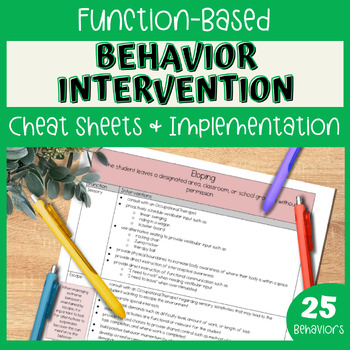This group has many needs. Most of them struggle visually, either due to vision issues such as difficulty with tracking or visual attention or due to visual sensory sensitivity. Therefore games that featured apples or buses that just happened to have numbers in the middle of them were too hard for these students to process visually and they were unable to focus on the most important aspect of the activity, the number.
Additionally, this group needs TONS of repetitions and structure. They need to repeat saying the number, seeing the number, and counting that number of objects. Additionally, I needed to find a way to present the new information/number in a similar way to how I taught the previous number. This eliminates several variables such as needing to teach them new directions to an activity or the students needing to learn to process information given in a different way. The most important goal was for them to learn the numbers. After they master the numbers, then I will begin using other activities to assist with generalization.
Finally, due to their visual and processing needs, these students also struggled with any one-to-one correspondence activities. Again, I felt I needed to find a way to teach the act of counting in a very structured way.
I am now in the process of creating a modified numeration curriculum for this set of students. This is what I have created so far:
1. Daily Powerpoint Review
(requires 1 copy of PowerPoint/Slides presentation to be projected)
- Project number review PowerPoint on the whiteboard (I've created a FREEBIE to tackle this first step for you!)
- Have students take turns identifying previously introduced numbers.
- Hide any slides of numbers that have not been introduced.
- Various colors are used to address visual sensory needs.
- For additional sensory input have students stand on an uneven surface (one foot on phone books, rocker board, etc.)
I adapted steps 2-4 from the book Teaching Reading to Children with Down Syndrome. I have found this match, select, say method to be extremely useful when teaching basic concepts (sight word reading, vocabulary, numbers, letters, etc) to my neediest learners and it is my form of Discrete Trial Training since I don't have a specific DTT program. In my opinion, the most important aspect of this method is keeping it very fast-paced. This keeps the student engaged and trains their brain to work quickly to ensure automaticity.
2. Match
(requires 2 sets of flashcards, copied on cardstock and laminated for durability
- Introduce target number flashcard, say the number, and have the student repeat
- Lay flashcard in front of the student.
- Introduce identical flashcard, say the number, have the student repeat
- Give flashcard to student and instruct to match (“Put 3 on 3”).
- Repeat 5x.
3. Select (Receptive ID)
(requires 1 set of flashcards, copied on cardstock and laminated for durability)
- Lay out a field of 3 number cards (1 target, 2 mastered)
- If introducing number 1 use 2 blank distracter cards
- Direct student to touch cards in random order (Touch 2, Touch 1, Touch 3)
- Rearrange cards and repeat 5x
- If students struggle with this step, return to Matching and repeat steps
4. Say (Expressive ID)
(requires 1 set of flashcards, copied on cardstock and laminated for durability)
- Shuffle cards and have the student identify each one
- Place easily ID’d cards aside and shuffle missed cards back into the stack
- If student struggles with this step, return to Selecting and repeat steps
I have created a set of flashcards with 6 different fonts needed for this Match-Select-Say sequence as part of my 15-Minute Multisensory Math and Reading Lesson Templates for RTI & SpEd.
5. Multisensory Generalization Activities
Finally, I work on generalizing and practicing numeration skills through multisensory activities. These are also a staple of my 15-Minute Multisensory Math and Reading Lesson Templates for RTI & SpEd which includes:
- Weekly lesson plan templates for letter and number skills
- Easy reference multisensory activity lists
- Data collection forms
 |
Some additional generalization and multisensory practice resources I use in my classroom include:
- Matching: sort number flashcards, sort Touchmath TouchNumerals, Vizzle sorting activities
- Receptive ID: SPLAT, Touchmath StepNumerals, DTT Numbers app
- Expressive ID: Trace and Say Multisensory Flashcards (sandpaper, pipe cleaners, glitter, puffy paint), Touchmath Texture Cards
- Counting: Vizzle counting activities, themed counting activities, counting bear counters or blocks
6. Multisensory 1-20 Number Practice
Finally, I created a workbook for numbers 1-20 which includes a very predictable format for continuous practice, independent work, review, and/or assessment. I love materials that follow a similar format with changing content because then my students only have to worry about learning to content and not the expectations of the activity. These number practice workbooks include the following steps:
- Color Number
- extra exposure to number
- repeat number several times while students color (“I like how you colored number 2”, “You’re 5 looks great”, etc)
- Touch and Count
- Have students point to the numbers as they count
- Color and Count
- Have students count as they color the stars
- MODIFICATION: Use bingo dotters if the student is unable to color quickly while counting
- Cover and Count
- using counter discs or tokens, have students cover black dots as they count out the designated number of items
- Number Writing (#11-20)
- For the teen numbers, I included some number writing as students are typically demonstrating higher-level skills at that point.
 |
Check out these digital features here:





















